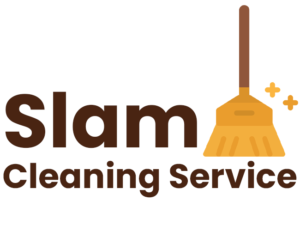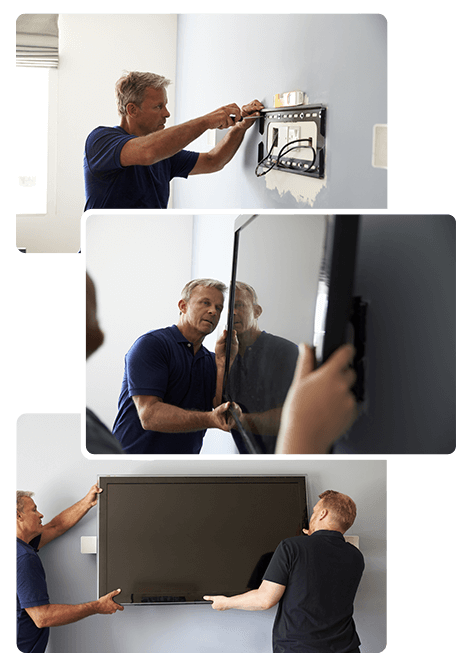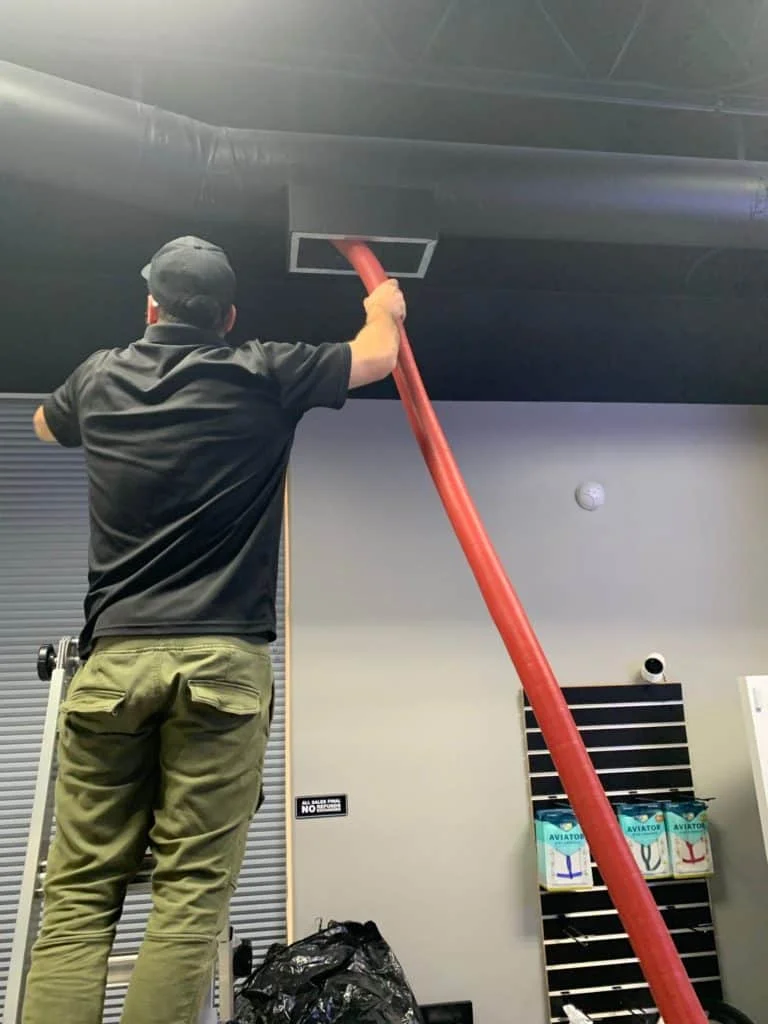Curved TVs have truly made a mark on the UK home entertainment scene. They introduce a unique viewing experience and a touch of modern sophistication. Mounting a curved TV presents its own set of challenges. This is especially true in British homes, where room layouts and wall types vary considerably. Here, you will find all about the intricacies of curved TV wall mount installation. From understanding the technology behind curved TVs to detailed installation steps and tips for optimising your setup, we’ve got you covered.
Pros and Cons of Curved TV Technology
Many people love curved TVs for their immersive and captivating viewing experiences. They thoroughly shake up the standard flat-screen design. The subtle curve in the screen isn’t just there for looks. It’s a functional feature that impacts how you engage with and enjoy our content. It’s not about style; it’s about enhancing our viewing adventure!
How Curved TVs Work
The engineering behind curved TVs is grounded in the principles of visual perception. Manufacturers aim to replicate the natural field of vision. They do this by gently curving the screen inwards. This creates a more immersive, panoramic viewing experience. This design intends to envelop the viewer, providing a sense of depth. It pulls them into the heart of the on-screen action.
ProsImmersive Viewing
It’s crucial to check if your chosen wall mount complies with VESA standards. Simply ensure that the wall mount aligns with these standards for a secure and reliable installation. This small but important detail ensures your TV is mounted correctly and meets industry standards. This immersive quality is particularly advantageous for movie enthusiasts, avid gamers, and sports fans. The dynamic curvature can intensify the visual experience.
Reduced Glare
Another notable advantage is the reduction of reflections and glare. Curved screens excel in minimising unwanted reflections. This makes them an ideal choice for rooms with abundant natural light. The curvature strategically directs light away from the viewer’s line of sight. This guarantees a clearer and more focused view of the displayed content.
ConsLimited Viewing Angles
The immersive benefits are significant. However, a drawback is the potential limitation in optimal viewing angles. Viewers who are off-centre may experience a decrease in picture quality. This, in turn, impacts the overall viewing experience. It’s essential to consider the TV’s placement. Ensure the curvature aligns with the primary viewing positions in the room.
Adaptation to UK Living Spaces
Different homes have diverse architectural styles and room layouts. Curved TVs seamlessly integrate into both modern apartments and traditional homes. The reduced glare feature is essential in well-lit rooms. This is a common feature of British households. The immersive quality of curved TVs enhances the entertainment experience. They are a versatile choice for various living spaces.
Selecting the Right Mount for Curved TVs in the UK
Choosing the perfect wall mount is not just about aesthetics. It’s a pivotal step in guaranteeing your curved TV’s safety and optimal functioning.
British Brands and Suppliers
When delving into the world of wall mounts, consider exploring trusted British brands and suppliers. For example, check out Vogel’s or B-Tech. Choosing products from these trusted sources ensures high-quality craftsmanship. It also ensures local customer support. This is especially crucial for any post-purchase queries or assistance. It provides a more reassuring and responsive experience.
VESA Standards
The compatibility of your chosen wall mount with VESA standards is a non-negotiable factor. Verify that the wall mount adheres to VESA standards. These are specifically designed for curved screens. VESA standards guarantee a secure fit. The mount eliminates any uncertainties about its capability to provide reliable support for your prized TV. This standardisation ensures that the mounting holes on the TV align seamlessly with those on the mount. This offers a secure and stable foundation for your curved display.
Mount Types
The market offers a diverse range of mount types. Choose carefully based on your room layout and viewing preferences.
Fixed Mounts
Fixed mounts offer a clean and low-profile look, ideal for those who prefer a seamless integration of their curved TV into their living space. They provide a stable and secure foundation, maintaining a discreet presence on the wall.
Tilting Mounts
Tilting mounts offer a straightforward solution for those seeking flexibility in their viewing experience. They provide a neat solution for different preferences. Whether you want it at eye level or need to reduce glare, these mounts make it easy. They’re simple and practical and let you adjust your TV effortlessly for the ideal viewing angle.
Full-Motion Mounts
Full-motion mounts give you the most flexibility, letting you swivel and tilt your TV both horizontally and vertically. They work well in bigger rooms or spaces with different seating arrangements, providing a dynamic viewing experience.
Understanding the nuances of each mount type ensures that your choice aligns seamlessly with your room dynamics and personal preferences. Whether you opt for a fixed mount’s sleek simplicity or a full-motion mount’s dynamic adjustability, the selection process becomes a crucial element in curating an optimal and personalised curved TV setup.
Preparation and Planning for Installation
Proper planning is key for a successful installation, especially in the diverse housing structures found in the UK.
Room Assessment – Conduct a thorough assessment of your room layout to maximise space and optimise the viewing potential. Consider the placement of furniture and potential obstacles to ensure an unobstructed view.
Challenges in UK Homes – Address unique challenges posed by historical architecture and non-standard wall materials. Older homes may have uneven walls, requiring additional attention during installation.
Tools and Materials – You can find the necessary tools and materials readily available in the UK market. This may include a stud finder, level, drill, and appropriate screws and anchors for your wall type.
Safety First: Installation on UK Walls
Safety is paramount when dealing with curved TVs’ heavier weight and unique balance.
Wall Types – You should be familiar with mounting specifications on different wall types. The plasterboard may need additional support. Brick and stud walls have their own considerations. Consult with experts if unsure about the compatibility of your chosen wall mount with your wall type.
Weight Distribution – Ensure proper weight distribution to prevent strain on the wall. This is crucial for both the installation’s safety and your TV’s longevity.
Secure Anchoring – Use appropriate anchors and screws provided with your wall mount to ensure secure anchoring. This step is vital for preventing accidents and ensuring the stability of your curved TV.
Detailed Installation Process for Curved TVs
You should pay attention to every detail when installing a curved TV. It guarantees a seamless and secure setup.
Alignment and Leveling
- Preliminary Assessment
Begin by assessing the desired placement of your curved TV. Consider factors such as eye level when seated, avoiding direct sunlight or glare, and maintaining a central focal point within the room.
- Wall Marking
Once the optimal position is determined, mark the positions for the mounting bracket on the wall. Use a measuring tape to ensure accurate spacing and uniform alignment.
- Use of Bubble Level
The curvature of the TV demands precision in alignment. Utilise a bubble level to guarantee both horizontal and vertical alignment. Adjust the TV and the mounting bracket until the bubble sits perfectly within the designated indicators.
- Consider Cable Connections
Before finalising the alignment, take into account the placement of cable connections. Ensure these are easily accessible yet discreet, allowing for a tidy appearance.
- Secure Markings
After achieving the desired alignment, securely mark the positions for drilling. This step helps maintain alignment accuracy during the installation process.
Stability:
- Wall Material Considerations
Different wall materials require varying installation approaches. For plasterboard walls, use wall anchors to distribute the weight evenly. For brick or stud walls, ensure the use of appropriate screws and anchors that can securely grip the wall.
- Mounting Bracket Attachment
Attach the mounting bracket to the wall carefully, following the manufacturer’s instructions. Use a power drill to create holes for screws, ensuring they align with the previously marked positions.
- Mounting the TV
With the assistance of a second person, carefully lift and mount the curved TV onto the bracket. Confirm that it securely slots into place and engages with the mount’s locking mechanisms.
- Double-Check Screws and Connections
After mounting, perform a thorough check of all screws and connections. Tighten any loose screws to prevent potential instability. Ensure the TV is flush against the wall, providing a secure fit and an aesthetically pleasing appearance.
- Weight Distribution
Consider the weight distribution of the TV, especially in the case of larger curved models. Ensure that the mounting bracket and wall anchors can adequately support the weight to prevent any wall strain over time.
- Post-Installation Adjustments
Admire your handiwork but be prepared to make minor adjustments. Evaluate the TV’s position and alignment one final time before entirely securing all screws. This step guarantees the longevity of your installation.
In curved TV installation, the devil truly is in the details. By making sure your curved TV is aligned, level, and stable, you’re not just improving how your living space looks – you’re also making your TV setup last longer and work better. Take your time with each step, and you’ll enjoy a viewing experience that goes beyond the usual.
Optimising Cable Management and Aesthetics
Maintaining your curved TV setup’s sleek and elegant look involves effective cable management and thoughtful aesthetics.
Innovative Solutions – Explore cable management solutions such as cable raceways, clips, or cable sleeves to keep wires tidy and hidden.
Aesthetic Integration – Consider your room’s interior style when planning cable routes. Use cable covers that blend with the wall colour. Alternatively, use decorative cable management systems to enhance the overall aesthetic appeal.
Creating the Ultimate Viewing Setup
Beyond the installation, achieving the perfect viewing experience involves fine-tuning various elements. To make the most of your curved TV, pay attention to a couple of key details. It’s these simple considerations that can really enhance your overall viewing experience.
Start by delving into your TV’s manual – it’s your guide to a customised, picture-perfect experience. Adjust the brightness, contrast, and colour settings to match your taste. Tailoring each moment to your preferences ensures a bespoke cinematic journey every time. Consider the optimal viewing distance and angles. The golden rule is to sit at a distance of 1.5 to 2.5 times the diagonal size of your TV. This will guarantee that your viewing experience is visually pleasing and optimally immersive.
Lastly, give your viewing space a boost by enhancing room lighting with adjustable fixtures or curtains, especially during daytime viewing, and arrange furniture strategically to ensure everyone in the room has a clear and comfortable view of the curved TV.
Maintaining Your Curved TV and Mount
Proper maintenance is crucial to ensure your investment lasts. Preserve your investment by following guidelines for regular care and maintenance.
Regular Care – Dust your TV with a soft, lint-free cloth. Don’t use harsh chemicals or abrasive materials that may damage the screen.
Adjustments – If required, safely adjust or reposition the TV. Check the tightness of screws periodically to ensure they remain secure.
Troubleshooting – In case of common post-installation issues like screen tilting or connectivity problems, check the TV manual for troubleshooting steps. Seek professional help if issues persist.
Considering Professional Installation in the UK
While DIY installations are possible, professional expertise is invaluable in some scenarios.
Complex Nature – The unique challenges of curved TV installation, coupled with the diverse housing structures in the UK, may warrant professional assistance. They have the experience to tackle complexities efficiently.
Recommendations – Consider professional installation services when dealing with large, curved TVs or challenging wall types. They can ensure a secure and seamless installation.
Finding Reputable Services – Look for TV mounting services with experience in handling curved TVs. Seek recommendations from friends or online reviews to find reputable professionals in the UK. Ensure they provide a warranty for their services.
Conclusion
In conclusion, mounting a curved TV involves careful planning. Select the right equipment and consider the specific challenges of curved TVs. Follow the tips and steps outlined in this guide to ensure a safe, secure, and visually appealing installation. It will enhance your home entertainment experience. Achieve the perfect balance between the immersive benefits of curved TVs. This requires meticulous planning for their installation. Your well-executed curved TV setup will add value to your home entertainment. It will also elevate the aesthetics of your living space.




